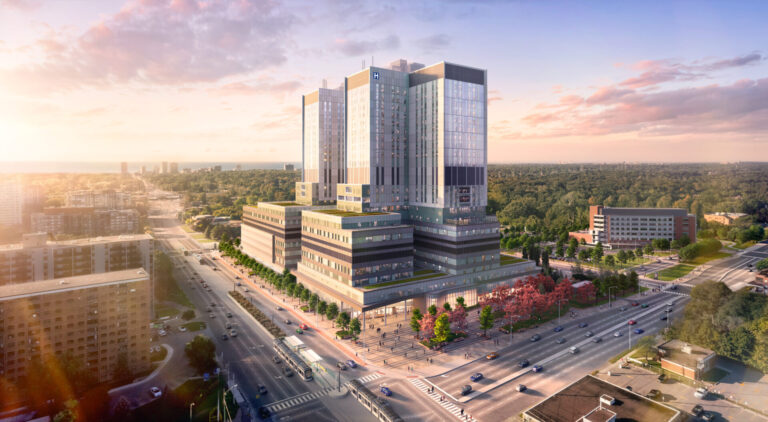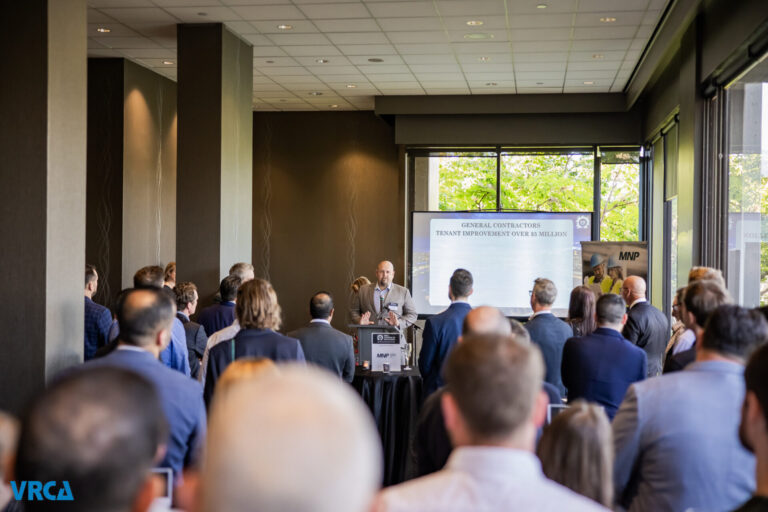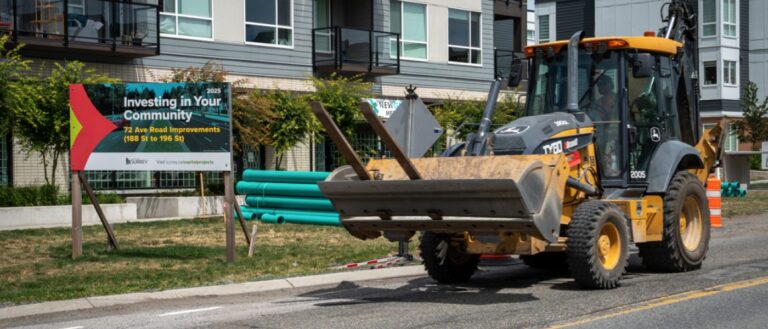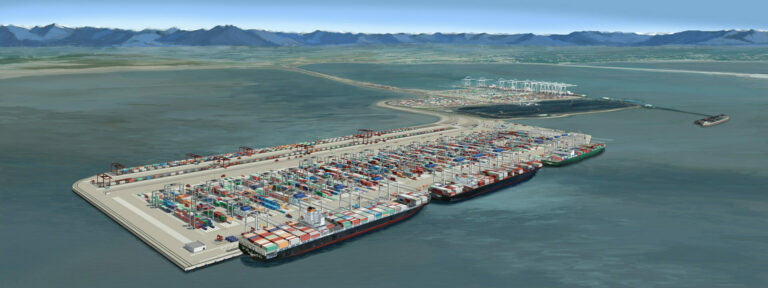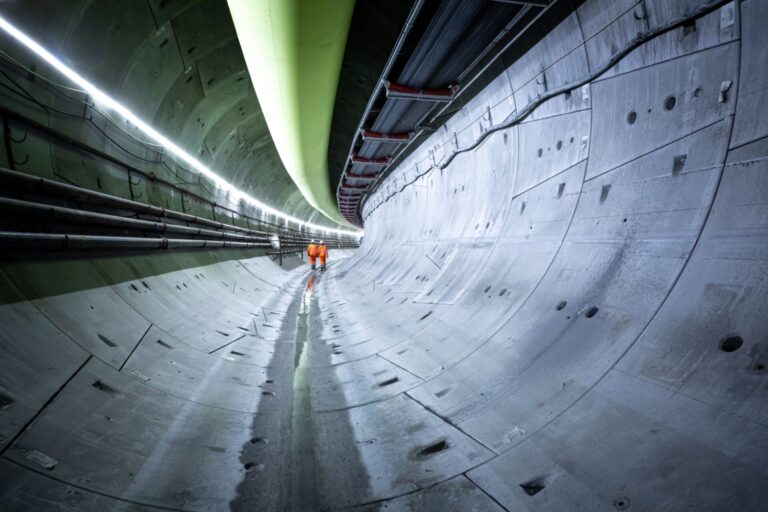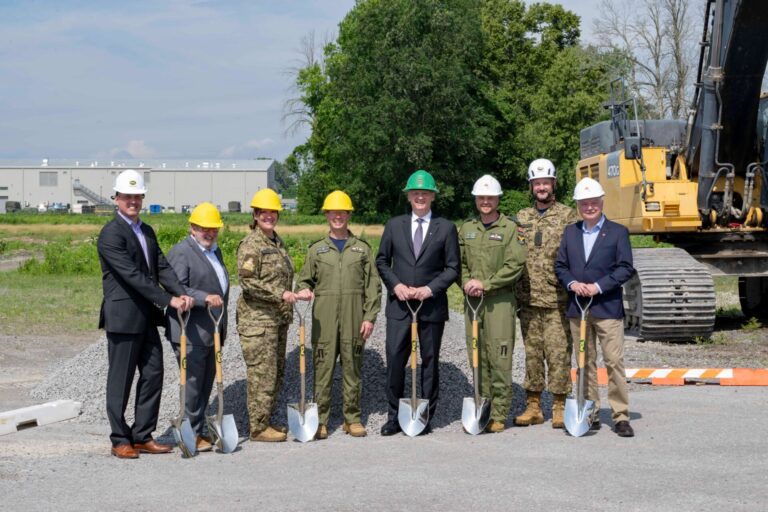Canada’s construction and maintenance industry rebounded strongly in 2021 and is expected to continue growing through 2027 on the strength of strong near-term demand and sustained activity in several key sectors, according to BuildForce Canada’s latest forecast.
Construction investment rebounded strongly in 2021 as Canada’s economy recovered from the effects of the COVID-19 pandemic. Total year-over-year construction investment increased by approximately 11% in 2021, as both the residential sector (+14%) and the non-residential sector (+8%) saw gains. Investment is projected to remain at or near current high levels through 2023 and before declining gradually over the remainder of the forecast period.
The rise in construction activity in 2021 lifted employment to approximately 1.1 million workers. That figure is a 7% increase over 2020 levels and a 1% rise over pre-pandemic figures recorded in 2019. The surge in construction activity in both the residential and non-residential sectors is expected to boost employment further to a peak in 2022, before diverging trends take hold thereafter. By 2027, employment is expected to expand by nearly 16,000 workers, or about 1% above 2021 levels.
“The good news story is that construction has rebounded well from the effects of the COVID-19 pandemic, thanks to a strong housing market and public-sector infrastructure investments,” says BuildForce Canada Executive Director Bill Ferreira. “The challenge before the industry, however, is how to manage its labour force. Retirements are expected to reach their highest levels over the next two years. About 156,000 workers, many of whom are from the baby-boom generation, are expected to exit the industry. This represents a significant loss of skills and experience – skills that take time to develop and that are not typically easily replaced by new workers entering the labour force.”
Residential construction activity recorded significant increases in 2021, with housing starts increasing by 21% over 2020 levels. BuildForce Canada expects demands in most provinces to recede from this peak in 2022 or 2023. There appears to be some evidence that Canada is not keeping up with demand for new homes, though in the face of rising interest rates, declines are expected in the rate of new-home construction throughout the forecast period. This in turn should produce corresponding declines in overall employment; declines that are only partly offset by rising demand for renovation work. By the end of the forecast period, residential-sector employment is expected to have declined by 4% (-24,900 workers) from its 2021 starting point.
Non-residential demands are expected to remain strong over the forecast period, driven by increases in spending across the public and private sectors. The largest gains are expected over the near term, peaking in 2024. Employment by 2027 is expected to be 5% higher than 2021 – an increase of 26,300 workers.
Provincial activity varies
Construction activity in all four Atlantic provinces is expected to peak between 2022 and 2024 before receding through the end of the forecast period. Nova Scotia is the only one of the four provinces in which employment is expected to increase through the forecast period, thanks in part to elevated levels of public-infrastructure investment in both civil and health care projects.
Quebec is expected to see strong short-term growth in all segments of construction. Residential demands will be mostly unchanged to 2024 and then ease in the latter half of the forecast period. Similarly, non-residential demands will rise to a peak during this period, but then retreat slightly as work on institutional projects winds down in the latter half of the forecast.
Ontario’s construction market is expected to see labour market challenges throughout the forecast period as sectoral unemployment returns to historically low levels. The pace of residential activity is expected to moderate, but a growing inventory of major infrastructure projects and a projected recovery in commercial building construction is expected to create growth across the forecast period and throughout the province’s discrete regions.
Manitoba’s construction market is set to continue its recovery in 2022, as new infrastructure investments help to offset the winding down of construction activity at Manitoba Hydro’s Keeyask dam project. Although construction demands are expected to moderate, they are expected to remain above 2021 levels by the end of the forecast period.
Saskatchewan appears poised for another extended period of construction expansion. Residential construction is expected to grow through 2022 with growth moderating afterwards, while public- and private-sector non-residential spending plans will be sustained through 2027.
The outlook for Alberta sees heavy-industrial maintenance work and public-sector spending driving employment growth in the near term, while projected increases in oil and gas investment should help to raise non-residential employment later in the forecast period. These should offset expected residential employment declines.
British Columbia’s residential and non-residential demands are poised to rise in 2022 and be largely sustained across the forecast period. The increases will be driven by strong demand in the public sector, as well as a recovery in new housing and renovation work, and commercial building construction.
“Normally, interprovincial mobility would be one solution the industry can deploy to compensate for peak periods of demand,” says Ferreira. “But given that peak demands will be seen across the country at almost exactly the same time, that option appears less viable in the short term. Employee-incurred costs when looking for work outside their home market also creates a strong disincentive to interregional mobility.”
Closing construction’s skills gap
The development of skilled tradespersons in the construction industry takes years, and often requires participation in a provincial apprenticeship program. Replacing retiring workers typically requires several years of pre-planning to avoid the creation of skills gaps. By 2027, overall hiring requirements in the industry are expected to near 172,000 due to the retirement of approximately 156,000 workers (or 13% of the current labour force) and growth in worker demand of nearly 16,000.
Based on historical trends, Canada’s construction industry is expected to draw an estimated 143,000 first-time entrants aged 30 and younger from the local population, leaving the industry with a possible retirement-recruitment gap of 13,000 workers. When coupled with demand growth, the industry may be short as many as 29,000 workers by 2027. Clearly, an ongoing commitment to apprenticeship development in both compulsory and non-compulsory trades will be necessary to ensure there are sufficient numbers of qualified tradespeople to sustain a skilled labour force over the long term.
The pandemic has complicated the training and certification of new workers. The latest Registered Apprentice Information Systems data shows declines in new registrations of at least 20% in nearly every province. Such impacts are likely to reduce the near-term numbers of new certified workers.
“The pandemic undoubtedly caused challenges in the labour force, and its effects will be felt for years to come,” says Ferreira. “The good news, though, is that the number of workers aged 25 or younger in construction grew by 4.7% in 2021. This suggests that the industry’s targeted recruiting efforts are bearing fruit. It will be increasingly important for the industry to build on this success, particularly as the population ages.”
The construction industry remains focused on building a more diverse and inclusive labour force. To that end, efforts are ongoing to enhance the recruitment of individuals from groups traditionally underrepresented in the province’s construction labour force, such as women, Indigenous people, and newcomers to Canada.
In 2021, there were approximately 190,000 women employed in Canada’s construction industry, of which 27% worked directly in on-site construction. However, of the 1 million tradespeople employed in the industry, women made up only 5% of the on-site construction workforce.
The Indigenous population is another underrepresented group that presents recruitment opportunities for the construction industry. In 2021, approximately 63,700 Indigenous people were employed in Canada’s construction sector, or 9% of all Indigenous people in the workforce. Of those in the construction and maintenance industry, 81% work directly on construction projects. As the Indigenous population is the fastest growing in Canada and Indigenous workers seem predisposed to the pursuit of careers within the sector, there may be scope to further increase the recruitment of Indigenous people into the construction workforce.
The construction industry may also leverage new Canadians over the coming decade to meet anticipated labour market requirements. Canada is expected to welcome an average of more than 237,000 new international migrants each year between 2022 and 2027. This will make new Canadians a growing segment of the overall labour force. The national construction labour force is comprised of approximately 20% new Canadians, which is lower than the overall share of new Canadians in the total labour force (26%).
Increasing the participation rate of women, Indigenous people, and new Canadians could help Canada’s construction industry address its future labour force needs.



